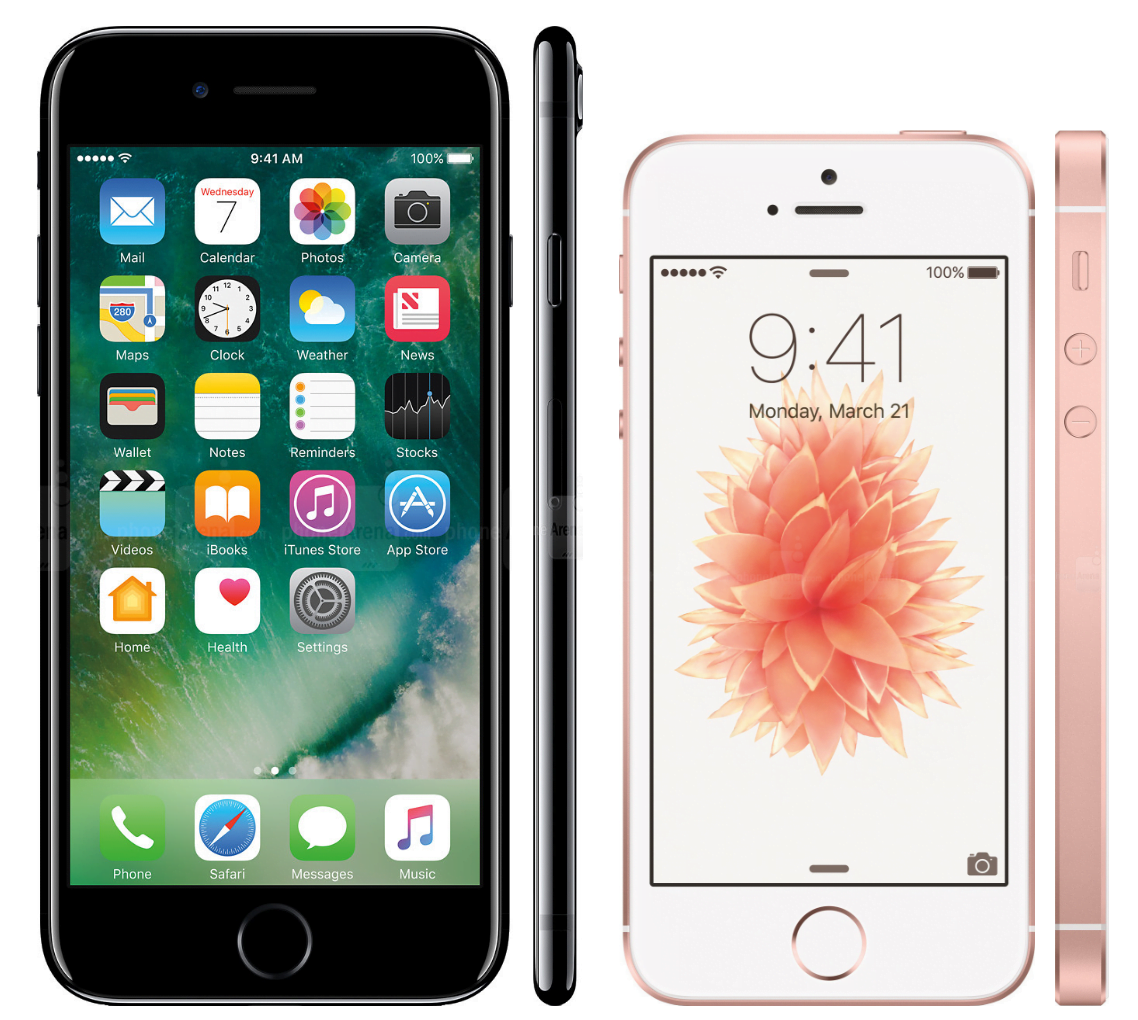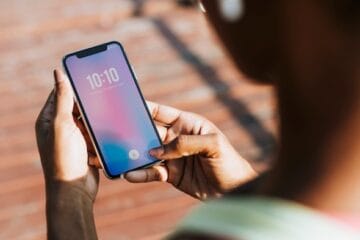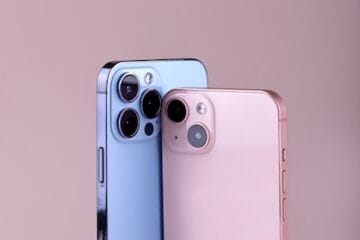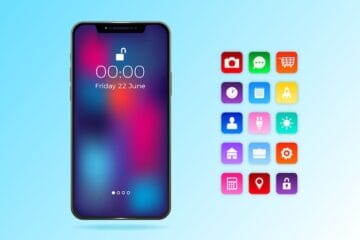The iPhone 7 may be taking all the headlines, but there is another current model which offers an equally compelling (and far more budget friendly) alternative: the iPhone SE. So what are the differences given the huge gap in their respective price tags? The answers may surprise you, so let’s take a look…
Note: if you do decide to upgrade to the iPhone 7, my detailed iPhone 7 vs iPhone 7 Plus review will help you choose between Apple AAPL -0.89%’s two premium models.

Choosing between the iPhone 7 (left) vs iPhone SE (right) is not as simple as you might thing. Image credit: Apple
Design & Size
Apple shocked a lot of people by keeping the iPhone 6 design largely unchanged for a third generation with the iPhone 7, but it was equally surprising to see the iPhone SE launch earlier this year using the old iPhone 5/5S chassis first introduced in 2012. That said it gives users two very different options:
- iPhone SE – 123.8 x 58.6 x 7.6 mm (4.87 x 2.31 x 0.30 in), 113g (3.99 oz)
- iPhone 7 – 138.3 x 67.1 x 7.1 mm (5.44 x 2.64 x 0.28 in) and 138 g (4.87 oz)
Yes, the iPhone SE is significantly more compact than the iPhone 7 and this is primarily due to the differences in the two models’ screen sizes (more next). Interestingly it also means the iPhone SE largely stands alone as an oasis in a desert of massive phones and it is super easy to use one handed – especially due to its flat, angular grippy edges.

By contrast the iPhone 7, while still relatively small by today’s phone standards, is more hazardous due to its curved edges and slippery finish. But it does come with a hidden bonus: dual stereo external speakers. This is a clever addition with Apple amplifying the earpiece to make it work as a second speaker. It’s not as powerful as dual front firing speakers, but it’s the easily the best external audio an iPhone has ever had.
Then again the iPhone SE retains one potentially major advantage over its more expensive stablemate: it retains the 3.5mm headphone jack which the iPhone 7 controversially removed. Looking for an upside? Apple claims the iPhone 7 is water resistant as a result (it’ll survive up to 30 minutes under water), though that doesn’t explain how the likes of Samsung kept the headphone jack while giving their phones similar water resistance.

Both the iPhone 7 (pictured) and iPhone 7 Plus are certified to withstand full submersion in water. Image credit: Gordon Kelly
Displays
Of course what makes the iPhone SE so much smaller than the iPhone 7 is its display:
- iPhone SE – 4-inch LED-backlit IPS LCD, 1136 x 640 pixels (326 ppi pixel density), 60.8% screen-to-body ratio
- iPhone 7 – 4.7-inch LED-backlit IPS LCD, 1334 x 750 pixels (326 ppi), 65.6% screen-to-body ratio. 3D Touch
And yet this is arguably also the iPhone 7’s greatest advantage. Despite having identical pixel densities, the iPhone 7 has a much brighter display than the iPhone SE and its support for what Apple dubs ‘Wide Color’ (the DCI-P3 color space) means it is far more colour accurate as well. In fact it’s the most colour accurate smartphone display in the world.

Both iPhone 7 and iPhone 7 Plus displays are bright, vivid and very color accurate pushing LCD to its limits. Image credit: Gordon Kelly
The iPhone 7 also carries forward support for 3D Touch from the iPhone 6S and which Apple surprisingly excluded from the iPhone SE (most likely to keep the price down). 3D Touch is a pressure sensitive technology which detects different strengths of press on the screen to create a raft of ‘peek and pop’ shortcuts (such as previewing emails or web links without opening them and creating app shortcuts like selfie and slo mo video modes on the camera icon).

Examples of 3D Touch in iOS. Image credit: Gordon Kelly
3D Touch splits opinion with some users finding it indispensable and others ignoring it to the extent they forget it is there (making what is and isn’t 3D Touch enabled a guessing game would help greatly). So its importance to you will be a crucial factor in which phone to choose.
Performance
The iPhone 7 is the fastest phone currently available, but before you reach for your wallet know this: the iPhone SE is also a flying machine. This is because it uses the same components as the still speedy iPhone 6S yet combines them with a less demanding, lower resolution display:
- iPhone SE and iPhone 6S – Apple A9, CPU: Dual-core 1.84 GHz Twister, GPU: PowerVR GT7600 (six-core graphics), 2GB RAM
- iPhone 7 – Apple A10 Fusion: Quad Core CPU, Six Core GPU, 2GB RAM
Of course the iPhone 7 does have an advantage. Apple says the iPhone 7’s CPU and GPU deliver 40% and 50% performance boosts respectively. This will be well worth the extra money to power users and serious mobile gamers, but for everyone else you’ll be happy to know both phones race along and neither is likely to be troubled for anything iOS apps will throw at them for several years.

The A10 Fusion chipset makes the iPhone 7 and iPhone 7 Plus Apple’s fastest ever iPhones and the fastest smartphones currently available. Image credit: Apple
There are other differences. The iPhone 7 has a 450Mbit 4G compatible modem whereas the iPhone SE oddly uses the older iPhone 6 150Mbit part, though this is unlikely to be a problem unless you live in an area with extremely fast 4G.
Similarly the iPhone SE uses the iPhone 6’s first generation Touch ID fingerprint sensor while the iPhone 7 keeps the second generation Touch ID sensor from the iPhone 6S. Does this matter? Not really, the iPhone 7 is that little bit quicker at fingerprint recognition but both are extremely fast and very accurate.
Cameras
The camera is perhaps the biggest factor in determining smartphone updates these days, so should you pick the iPhone 7 for its heavily marketed camera advancements? You might be surprised learn that the answer is: not necessarily.

Apple promises game changing cameras in the iPhone 7 and (in particular) the dual camera iPhone 7 Plus, but do they deliver? Image credit: Gordon Kelly
- iPhone SE – Rear: 12 megapixel sensor, f2.2 aperture, Focus Pixels, EIS, dual-LED flash, 4K video recording. Front: 1.2MP Front Camera, f2.4 aperture, 720p video recording
- iPhone 7 – Rear: 12 megapixel wide angle sensor, f/1.8 aperture, Focus Pixels, Optical Image Stabilisation, quad-LED (dual tone) flash, 4K video recording. Front: 7MP sensor, f/2.2 aperture, 1080p recording
As you’ll spot, the real differentiator here is actually the front facing camera since the iPhone SE disappointingly retains the substandard front camera from the iPhone 6. That’s a real shame. The iPhone 7 front camera isn’t class leading, but it is far superior.

iPhone 6S (left) and iPhone SE (right) produce identical results. Image credit: Gordon Kelly
That aside both phones’ main rear shooters produce very similar results because the iPhone 7 isn’t quite as revolutionary as Apple would like you to believe. Low light photography is where the biggest advancements lie thanks to a combination of a higher aperture (f/1.8 vs f/2.2) and the addition of optical image stabilisation (OIS) which allows for longer exposures.
Despite this the iPhone 7 is still comfortably behind the Galaxy S7 and, most significantly, Google’s new Pixel and Pixel XL in the photographic stakes and the iPhone SE remains an excellent shooter. So only camera aficionados wedded to the iOS platform need to make this the deciding factor.

Right now the Google Pixel is clearly the best smartphone camera with the Galaxy S7 second and the iPhone 7 in third place. Image credit: Gordon Kelly
Battery Life And Charging
And it is perhaps here that the iPhone SE delivers the biggest surprise of them all because, despite a smaller capacity (1642 mAh vs 1960 mAh), it offers considerably better battery life than the iPhone 7.
The reason for this is its smaller, lower resolution display. Displays still consume most battery power while the iPhone SE also needs to drive less pixels to power it. Consequently even Apple’s official specifications page admits you’ll get an extra hour on the iPhone SE when surfing the web using 4G and up to 10 hours additional music playback.
Personally I find the differences to be even greater than this.

The iPhone 7 lacks a headphone jack (unlike most rivals) meaning you can charge it and use wired headphones at the same time. Image credit: Gordon Kelly
The iPhone SE will comfortably get me through a day whereas the iPhone 7 nearly always requires charging by mid to late afternoon. Given neither phone supports fast charging out the box (you’ll need to buy an iPad charger separately for a moderate improvement), this makes ‘splash and dash’ charging less effective and the importance of the iPhone SE’s greater staying power all the more useful.
Storage And Price
Easily the best thing about the iPhone SE and perhaps its greatest differentiator is price, but the iPhone 7 does come with bigger storage options:
- iPhone SE – 16GB ($399), 64GB ($499)
- iPhone 7 – 32GB ($649), 128GB ($749), 256GB ($849)
With 16GB all but useless given the iPhone SE’s advanced camera and 4K video, the 64GB option is the clear sweet spot and since this is $150 less and twice the storage of the entry level 32GB iPhone 7 it becomes a very tempting budget friendly option. Especially for those who want to retain the 3.5mm headphone jack.
As for the iPhone 7, the $749 128GB option is the clear standout for most customers. Note most buyers outside the US will find prices higher than this, in particular the UK and India where Apple increased prices dramatically this year.

iPhone SE vs iPhone 7 Plus (proportional size difference). My tip is to buy one of these phones and skip the iPhone 7. Image credit: Apple
Bottom Line
Aside from the disappointing front camera, the iPhone SE is almost a perfect budget iPhone. It’s compact, fast, long lasting and takes great photos. By contrast the iPhone 7 is more divisive with its omitted headphone jack and relatively modest camera upgrade.
Consequently my recommendation is simple: go small (iPhone SE) or – if you have the money to spend – go big for the iPhone 7 Plus which has a superior display, clever dual rear camera and vastly better battery life that easily justifies its additional $100 outlay at each storage capacity.
For me the iPhone 7 is a phone caught in no man’s land. Easily outclassed by its bigger brother at the high end and not offering anywhere near the bang for your buck of the iPhone SE.
[Source:-Forbes]




